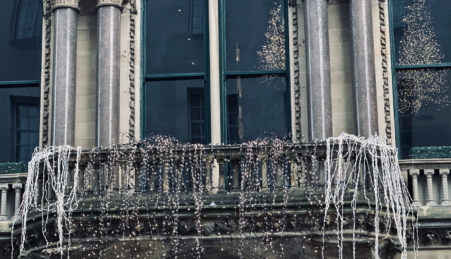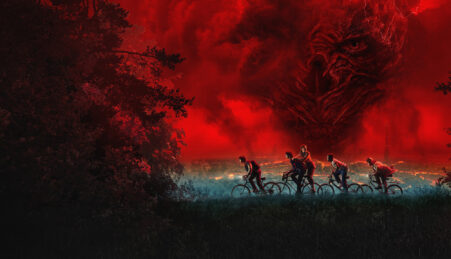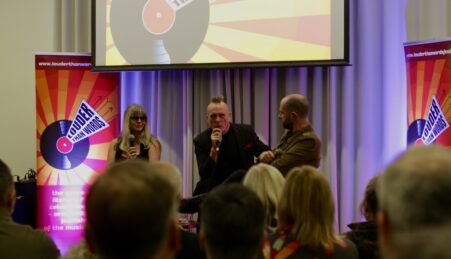By Jacqueline Grima
In 1940, at the height of the Second World War, the Nazi concentration and death camp, Auschwitz-Birkenau was established in a small village in Poland. As the war continued, approximately 1.3 million people, mostly Jewish, were brought to Auschwitz from all over Europe, an estimated 1.1 million of those meeting their death at the camp. As part of their Lessons From Auschwitz project, the Holocaust Educational Trust (HET) recently took 200 post-16 students from schools and colleges across the North West to Poland to visit Auschwitz. The trip formed part of the Trust’s ‘hearing is not like seeing’ campaign.
Invited to attend as part of a press team, I join the students, educators and organisers on the early flight from Manchester. During the flight, Education Officer, Tom Jackson speaks about the emotional-demands of the day ahead, attempting to prepare both students and guests for what they will see. “People react in lots of different ways,” Tom says. It is only later in the day that many of us will understand what he means.
After landing in Krakow, the group’s first stop is the village of Oswiecim, which, as HET Educator, Adrienne explains, is where the Auschwitz death camps were built. Prior to the Second World War, approximately 58% of the village was Jewish, the town’s population dramatically diminished after the deaths of so many Jews in the camps. Here, in the Jewish cemetery, the students have chance to look at the graves of some of the Jews who survived the camps and who went back to live in the village despite the horrors that had taken place there.
Next, the coach takes us to Auschwitz 1, now open to the public in order to highlight the atrocities that took place there. Above the entrance, the iconic sign ‘Arbeit Macht Frei’ or ‘Work Equals Freedom’ is an ironic reminder of the prisoners who were worked to death at the camp, forced to labour for hours on end with no breaks and barely any food.
As we enter the prison-like buildings, the massive scale of the Nazi’s relentless extermination of the Jewish race, something most of us have only previously read about, soon becomes all too real. Housed inside a huge glass case, the two tonnes of hair, shorn from the heads of Jewish women and later used to stuff the mattresses of German soldiers, says more to the students about the Holocaust than any text book ever could. Alongside the hair, another glass case houses over 80,000 shoes, all belonging to victims of the camp. In another, suitcases, lovingly adorned with the names and addresses of their owners. In another, baby clothes. Another, thousands of hair and shaving brushes, perhaps given to the Jewish women as wedding gifts or to the men on their 21st birthdays.
As our guide, Michael, takes us from one display to the next, many of the students, previously chatty and excited, are now quiet, stunned. Some who, like myself, were intent on taking lots of photographs, seem now to have lowered their cameras, struggling to absorb what is in front of them with their own eyes. As HET consistently stress, hearing is, indeed, not like seeing.
Next, the coach takes us on the short journey to the Birkenau camp, built by the prisoners of Auschwitz 1 after the Germans realised they no longer had enough room to house the vast number of prisoners being brought to Poland. Whereas Auschwitz 1 was used as a labour and concentration camp, Birkenau was primarily a death camp with approximately 75% of the prisoners brought in taken immediately to the gas chambers. After being ordered by the Nazis to strip, gas chamber victims, mostly women and children, were told that they were being taken to the camp’s showers. Many of the victims believed the lie, hoping right until the end that the Nazis were not leading them to their deaths. As Michael tells us: “Hope is the last thing to die.”
Viewed through the eyes of a Nazi guard in the iconic guard tower, the sheer size of the Birkenau camp is difficult to comprehend. Wooden dormitories, surrounded by barbed wire fences, stretch for what seem like miles, interspersed with the now-crumbling gas chambers, many destroyed after the war to hide their horrors. With the sun now setting, a gentle orange glow filling the sky, the camp has, in the evening, an eerie, almost surreal quality. As we stare into the depths of the underground pits that lead to the gas chambers, where family after family met their end, it might be easy to believe that, out of the millions of victims, the spirits of a restless few perhaps remain.
As the tour comes to an unsettling end, the victims of Auschwitz-Birkenau are brought to life in a startling display of family photographs: weddings, holidays, christenings. Babies, grandparents, sons and daughters. As they contemplate each and every life in these images – blighted, interrupted, more often than not, ended – the students are quiet and respectful.
Most now emotionally-exhausted, each student is then given a memorial candle. In the darkness of the freezing night, the camp, now empty of other visitors, is quiet. The only sounds now breaking the silence are the gentle voices of the students who have been chosen to read homages to the Holocaust victims. After the readings, students and guests light their candles, each pausing for a moment to quietly reflect on their day.
The Auschwitz-Birkenau museum serves as a stark reminder that what happened to the Jewish race during the Second World War could very easily happen again in any country in the world at any time. Think Bosnia, Palestine, Syria. Perhaps the world has not changed as much as we think it has. What the Holocaust Educational Trust does, however, is teach the next generation about the atrocities of war, about the actions man is capable of committing against his fellow man. With their help, and with the dedicated work of the students who will now become the Trust’s Ambassadors, the story of the Holocaust’s victims will not die along with its last survivors.
To find out more about the Lessons From Auschwitz project, visit the Holocaust Educational Trust website.
All gallery images courtesy of grahamsimages.com





Leave a reply